In First Light: A Decade of Collecting at the ICA, the Museum reframes its own history by showcasing the stories within its collection. The ICA was established in 1936. Yet it only started collecting artworks ten years ago, which coincided with the Museum’s move to its iconic Diller Scofidio + Renfro building. In its mission statement, the ICA commits itself “to present outstanding contemporary art in all media…that is deserving of public attention and has not been presented in-depth to Boston audiences.”[1] Past exhibitions of the ICA’s collection have focused on the artworks’ materials and the artists’ methods. This more technical presentation has presented what the Museum has found to be notable developments in various media of contemporary art, such as photography and painting. First Light delves much deeper into the narratives of the works presented. In doing so, the Museum shares the stories it considers vital to its own history and that of contemporary art.
Many artists' names and artworks in First Light will be familiar to regular visitors of the ICA. When presented in such an expansive show, we can more deeply appreciate the ICA’s focus on art that examines how the artist’s history, culture, identity, and community can inform her or his practice. This focus is further aided by the organization of the exhibition into a series of smaller shows, each curated by a member of the Museum’s curatorial team. We can see how the individual curators work with the artworks in the collection, giving insight into what they find most captivating and important from the collection and what directions we might expect their work to take at the Museum.
Questioning Your Teaspoons includes art focused on the home and domestic; Soft Power examines contemporary fiber arts; portraits by photographers Rineke Dijkstra and Nan Goldin are recontextualized together, and a selection of art by women from the Barbara Lee Collection is showcased. There are also two videos nestled amongst these inner shows, including Paul Chan’s 1st Light, which helped launch the collection and from which this exhibition gets its name. The other is Sharon Hayes’s Ricerche: three, in which she records a discussion with students at a women’s college in Western Massachusetts.
--
Questioning Your Teaspoons, organized by Associate Curator Ruth Erickson and on view until the second of October, invites viewers into interiors that range from intimate to menacing. Upon entering the gallery, Mickalene Thomas’s painting Monet’s Salon draws us close with its large, colorful, and sparkling image of a chaise lounge in a sunny room. However, the fractured view of it and the stanchions within the painting create a barrier to the viewer.
Taking some space, or keeping a wary distance, proves to be a useful skill in navigating many of the works in this show. The candy-colored glass bombs and grenades in Mona Hatoum’s Natura morta (Edwardian vitrine) draw the viewer in, but recognizing the objects (and that all of the grenades’ pins have been pulled) darkens the initial wonder. Her conjoined teacups, T42, are amusing until we imagine trying to use the cups as drinking vessels and the splatter of burns that would result.
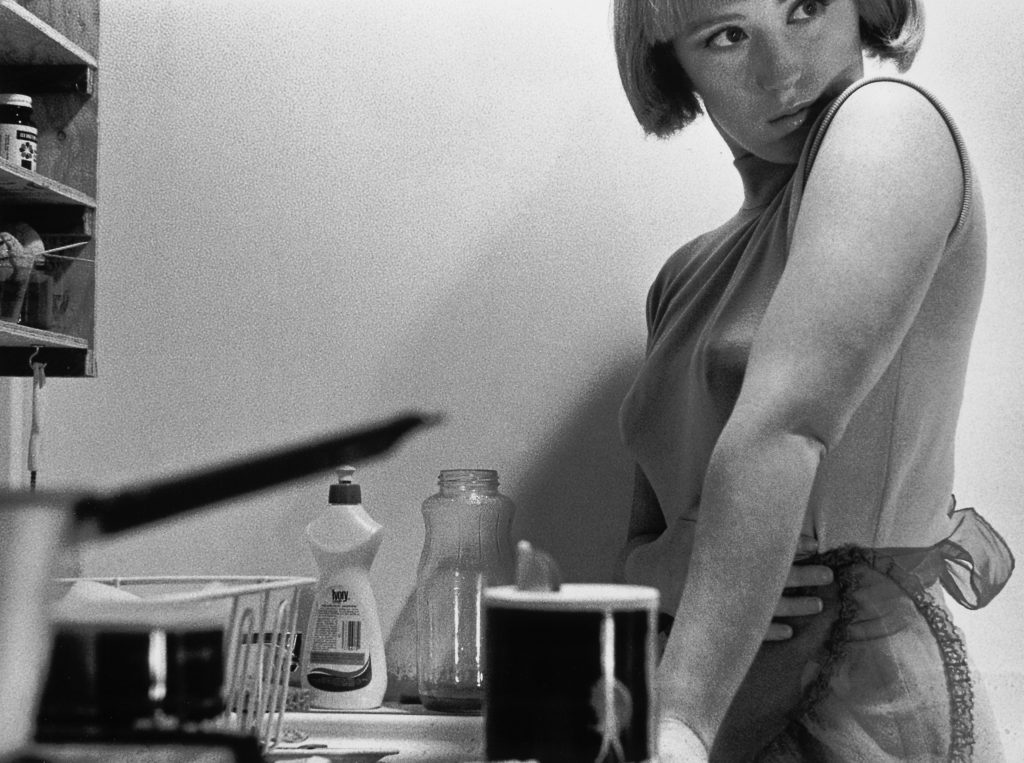
Cindy Sherman, Untitled Film Still #3, 1977. Promised gift of Marlene and David Persky. Courtesy the artist and Metro Pictures. ©2016 Cindy Sherman.
However, more investigative looking is also rewarded. We build the bodies we do not see in Kelly Sherman’s Wish Lists, imagining who wrote each list and what sort of space would house them and the things they desire. We construct the rest of the kitchen in Cindy Sherman’s Untitled Film Still # 3 to try to figure out with whom or what the subject is so intently engaged that it distracts her from her domestic task. We cannot, no matter how many different angles and distances we try, see into Doris Salcedo’s Untitled, in which Salcedo has filled a wardrobe with cement. We instead are left to imagine what was buried so violently and irreversibly.
--
If you were able to visit the ICA’s 2014 show Fiber: Sculpture 1960–Present, you may find yourself running to Soft Power, organized by Mannion Family Senior Curator Dan Byers. The artworks are thoughtfully selected and converse well with each other. However, the space is so crowded that these conversations can feel like a shouting match.
Material weight as a sculptural element is examined in Françoise Grossen’s ponderous Inchworm and the seemingly weightless ropes in Robert Rohm’s Untitled. Alighiero Boetti’s colorful embroidered tapestry calls to mind patchwork quilts and tapestry wall hangings, a mixture of folk and high art that both predate our current classification of fiber art. Kai Althoff’s Untitled and Josh Faught’s Untitled examine the relationship between painting and fiber art. Althoff exposes the patterned cloth he uses as a canvas for his painting, and Faught suspends his work on a garden trellis that references traditional stretched canvas frames. While the dialogue between the two is interesting, it could be subtracted to allow more space for other works such as Nick Cave’s intricate Soundsuit. Soft Power covers a lot of material in its limited space. Much of this is a formal investigation of what fiber art is and how it fits into and differentiates itself from more traditional media. In this way, Soft Power feels more like previous collection shows at the ICA.
The 2014 fiber arts show was a monumental moment in the Museum’s history and for fiber art itself. As such, it merits its own space in First Light. The works presented are well chosen, but their treatment does not immediately mesh as well with the rest of First Light. The other inner shows are more deeply rooted in the artworks’ narratives. The more formal focus of Soft Power distinguishes it from its neighboring shows, yet creates a moment of slight disjointedness within the greater exhibition.
--
Curatorial Assistant Jessica Hong focuses on two formidable photographers in her Rineke Dijkstra/Nan Goldin show, both of whom are known for their distinct ways of chronicling intimate studies of their subjects. Goldin’s portraits, even when posed as her Self Portrait on the Train, Germany, are intimate glimpses into her subjects’ quotidian lives. There is an arranged collection of independent portraits and an almost collaged collection of portraits titled From Here to Maternity that examine mothers and their children. Similarly, Almerisa is a series of eleven portraits of Almerisa, who Dijkstra had met when the girl was a six-year-old refugee from the former Yugoslavia. Over fourteen years, Dijkstra chronicled Almerisa’s life in the Netherlands. The changes in Almerisa’s style and posture capture her journey from child to teenager to woman, as well as her immersion into Dutch life.
Dijkstra’s and Goldin’s works cannot be experienced without Ricerche: three, a video by Sharon Hayes. This video’s gallery is directly connected to Rineke Dijkstra/Nan Goldin, and the students’ voices seem at first like those of fellow visitors. In Ricerche: three, Hayes interviews a group of students at a women’s college about sex, sexuality, gender, feminism, liberation, and the differences between navigating the college’s culture and that of the world directly outside the campus. She focuses the camera on individual speakers as well as on the group as a whole. The students’ voices rise and fall as they find their verbal footing. At one point, Hayes asks a student, “How do you think the sex you have is different than your mother’s?” That question echoed in my head as I reexamined Goldin’s From Here to Maternity, and the greater conversation further charged another viewing of Almerisa’s development.
--
Rineke Dijkstra/Nan Goldin’s neighbors The Barbara Lee Collection of Art by Women, organized by Chief Curator Eva Respini. Barbara Lee has been an active supporter of the ICA for twenty-five years, as a board member and a significant donor. In fact, it was her promised gift of Cornelia Parker’s Hanging Fire (Suspected Arson) that began the ICA’s collection.[2]

Installation view, First Light: A Decade of Collecting at the ICA, The Institute of Contemporary Art/Boston, 2016-17. Photo by Charles Mayer Photography. Kara Walker, The Nigger Huck Finn Pursues Happiness Beyond the Narrow Constraints of your Overdetermined Thesis on Freedom - Drawn and Quartered by Mister Kara Walkerberry, with Condolences to The Authors, 2010. The Barbara Lee Collection of Art by Women. Courtesy the artist and Sikkema Jenkins & Co. ©2016 Kara Walker. Cornelia Parker, Hanging Fire (Suspected Arson), 1999. Gift of Barbara Lee, The Barbara Lee Collection of Art by Women ©2016 Cornelia Parker.
Kara Walker’s The Nigger Huck Finn Pursues Happiness Beyond the Narrow Constraints of Your Overdetermined Thesis on Freedom-Drawn and Quartered by Mister Kara Walkerberry, with Condolences to the Authors is a combination of the large cut-out wall installations that Walker is most known for, and includes her works of gouache and ink on paper. The starkness, size, and energy of the cutout figures as they cavort across the wall contrast with the quieter framed works on paper, encouraging viewers to take in the work from a distance and then to move in for a closer examination.
While Erickson’s exhibition causes us to question how artists represent private interiors, Respini’s selection of work raises an awareness and a number of questions about museums as institutions. Sherrie Levine’s Fountain (Buddha) is a brilliant bronze casting of a urinal, referencing Marcel Duchamp’s iconic ready-made sculpture. Lisa Yuskavage distorts the female nude in Motherfucking Rock; the subject defiantly stands in contrast to the idealized female forms painted overwhelmingly by male artists and shown in museums that motivated the Guerrilla Girls to question if a woman had to be naked to be in a museum. In ID, Lorna Simpson causes us to question how we classify things such as artworks and people. She presents two photographs. One is a portrait of a black woman seen from behind, accompanied by the word “identity” below. The other is a close-up of a section of this woman’s hair and the word “identify.” ID certainly has implications outside the museum’s walls, but its placement in this show causes viewers to question how they respond to works based on what they know (or presume to know) about the artist.

Lorna Simpson, ID, 1990. Gift of Barbara Lee, The Barbara Lee Collection of Art by Women ©2016 Lorna Simpson.
Fractured or absent female forms also fill Respini’s show. Marlene Dumas’s The Messengers shows disproportionate skeletons (one of whom appears to be giving birth) and one larger-than-life representation of the artist’s daughter. Ana Mendieta’s Silueta Works in Mexico are fleshier outlines of the artist’s body. Traveling around Mexico, Mendieta evidenced her interaction with the land by leaving outlines or impressions of herself in the earth and photographing them. The female form is most absent in Doris Salcedo’s Atrabiliarios. Here, the artist has taken women’s shoes that were left behind after they were disappeared during times of political unrest in Salcedo’s native Colombia. The shoes are housed inside the museum’s wall, the recesses covered in cow’s bladder that is sutured into the plaster to create a murky membrane.
--
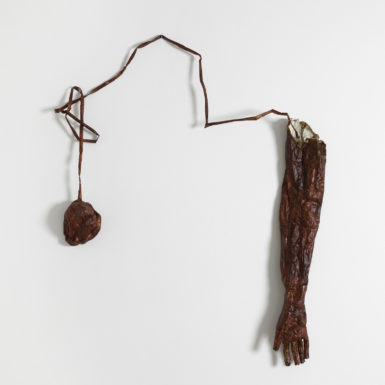
Kiki Smith, From Heart to Hand, 1989. Gift of Barbara Lee, The Barbara Lee Collection of Art by Women. Courtesy Pace Gallery, New York. © 2016 Kiki Smith.
First Light celebrates the uniqueness of the ICA’s collection and the individual ways the curatorial team responds to and champions this uniqueness. The majority of artists in the collection are women, in no small part due to Barbara Lee’s generous donations. The majority of curatorial voices are also women’s. Furthermore, many of the artists (women and otherwise) are queer, of color, or a number of combinations of these and more othered identities. Our current social discussions of who is allowed to exist where and how make any story told by someone who has historically been cast as an outsider into an urgently relevant and political one. These discussions are heavily present in First Light, both as the artists individually parse them out and by each curator's selection of artworks and focus. First Light’s brightest moments occur when it delves into the artworks’ narratives and celebrates what makes these stories, and the collection itself, stand out from more traditional institutions.
[1] “Mission,” ICA/Boston, https://www.icaboston.org/about/mission.
[2]“Culture Shift: Barbara Lee on Building Collections,” ICA/Boston, September 9, 2016, https://www.icaboston.org/articles/culture-shift-barbara-lee-building-collection.

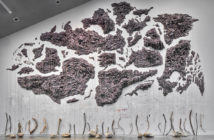
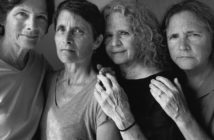
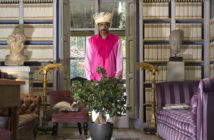
2 Comments
An exceptionally thoughtful, insightful ad well written description — makes me want to visit today! Thank you!
The Institute of Contemporary Art in Boston has a great collection. “First Light” offers visitors a glimpse at how diverse the collection really is by showcasing some of the best pieces.